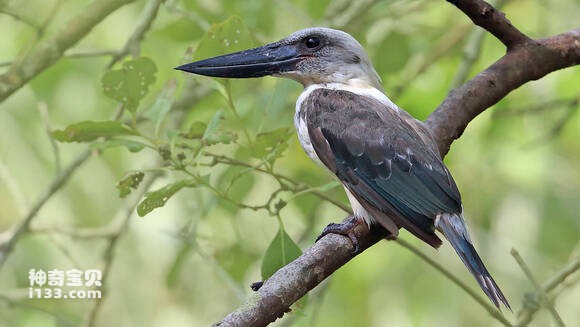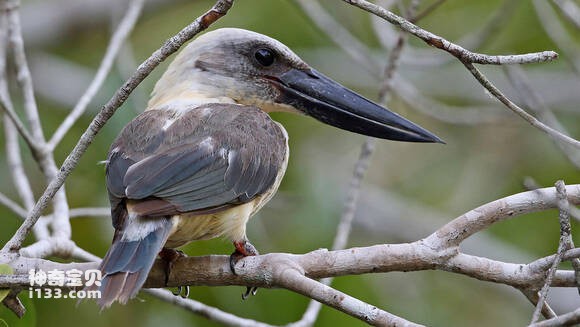Pelargopsis melanorhyncha
IUCN
LCBasic Information
Scientific classification
- name:Pelargopsis melanorhyncha
- Scientific Name:Pelargopsis melanorhyncha,Black-billed Kingfisher,Great-billed Kingfisher
- Outline:Climbing birds
- Family:
Vital signs
- length:About 35 cm
- Weight:184-203g
- lifetime:No textual research information is available
Feature
Distribution and Habitat
The big mouth jade is distributed in the Pacific islands, Wallace District.
The large mouth emerald is very dependent on the aquatic environment and usually inhabits riverbanks near the water, such as rivers, estuaries, bays, mangroves, coastal crags and lush shrubs.
Appearance
The big mouth jade is 35 cm long and weighs 184-203 g. The head, neck, back, tail and underbody of the adult bird are cream white. Underbelly and tail light yellow or yellow. Black eyes first. There are black spots on the forehead, zygomatic and cheek feathers. The back, shoulders, wings and tail have some dark green and dark brown. The tail and sides show shade green. The tail edges are dark brown with white stripes. The mouth is black with a small red spot at the base of the mouth. Iris is dark brown, reddish-brown legs.
The mouth is thick and long like a chisel, the base is wider, the mouth peak is straight, the peak ridge is round, there is no nasal groove on both sides; Wing circle, the first primary feather is equal or slightly shorter than the seventh primary feather, and the second, third, and fourth are nearly equal in length; Primary feather base with white spots; The tail is round.
Details
The scientific name Pelargopsis melanorhyncha, the foreign name Black-billed Kingfisher, Great-billed Kingfisher, has three subspecies.

The big mouth jade is generally alone or couples to hunt together. Most of the food comes from the aquatic environment, either on land or in fresh water from inside. They eat mostly crabs and crawfish.

Nesting occurs in September. No other information is available.
Listed in the International Union for Conservation of Nature Red List of Threatened Species (IUCN) for 2016 ver 3.1 - Not Threatened (LC).
Protect wild animals and eliminate wild meat.
Maintaining ecological balance is everyone's responsibility!








